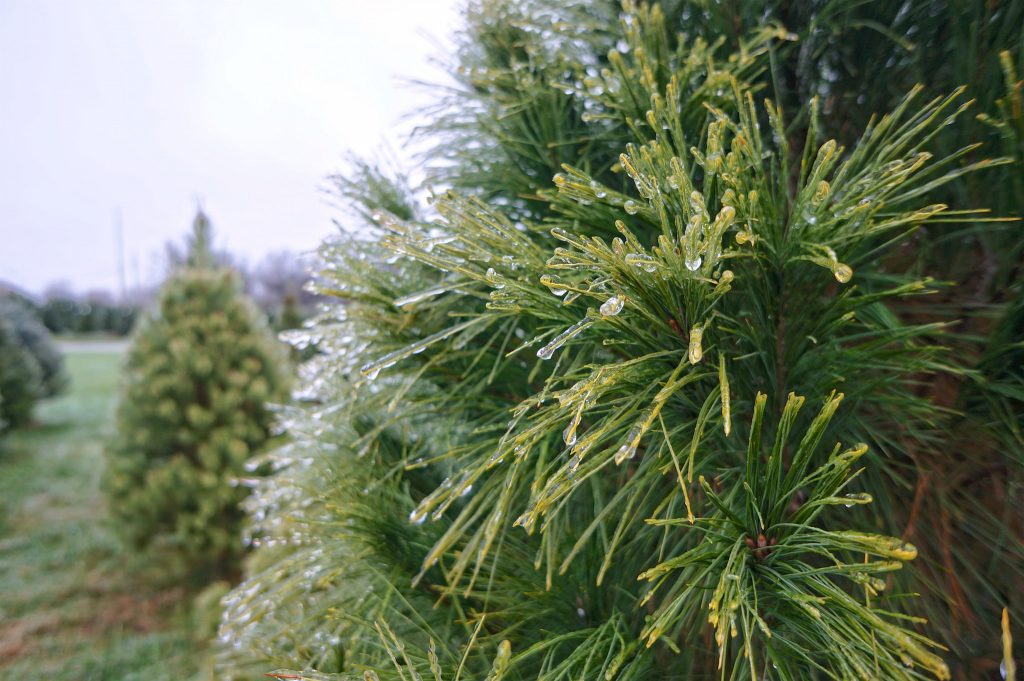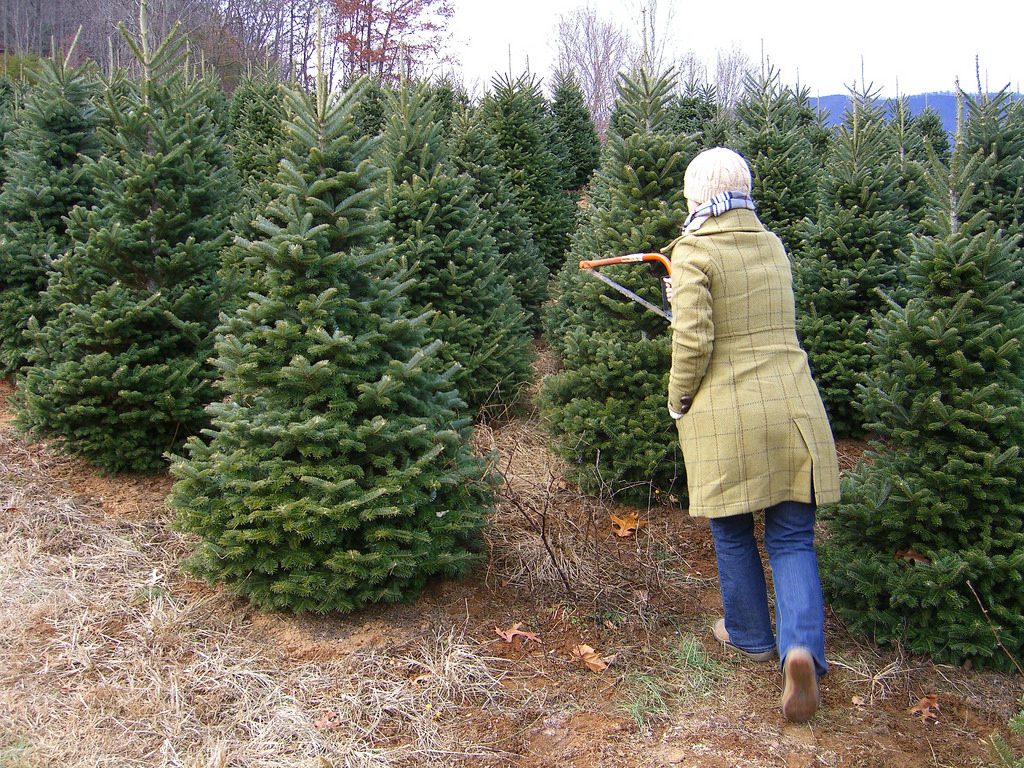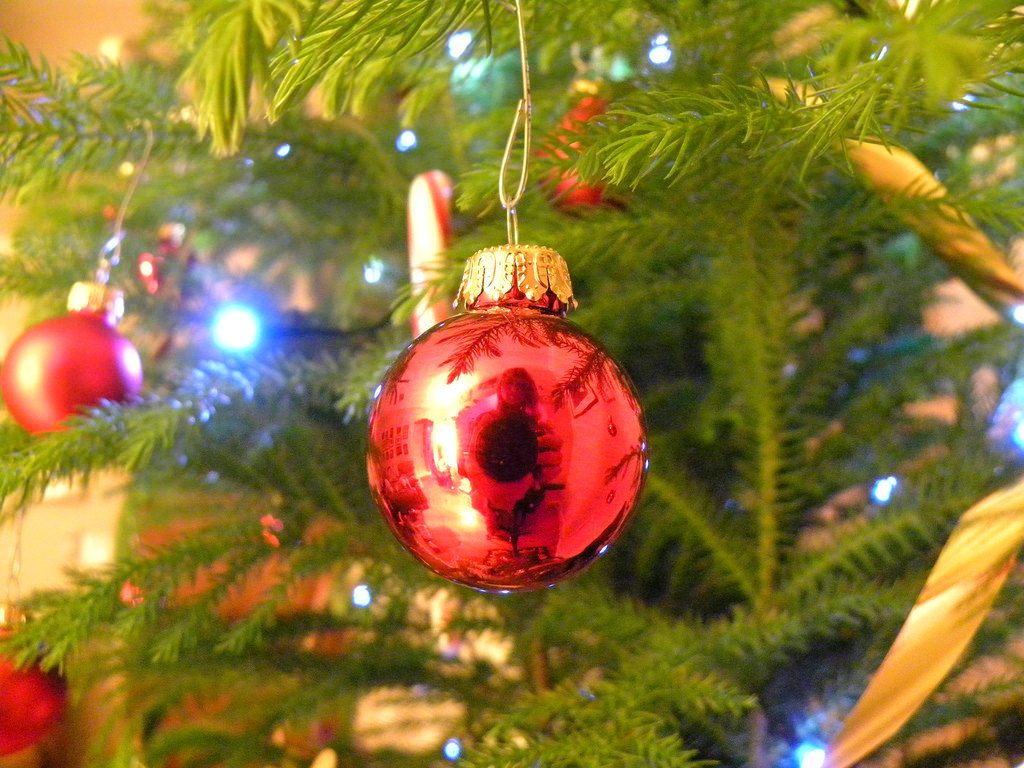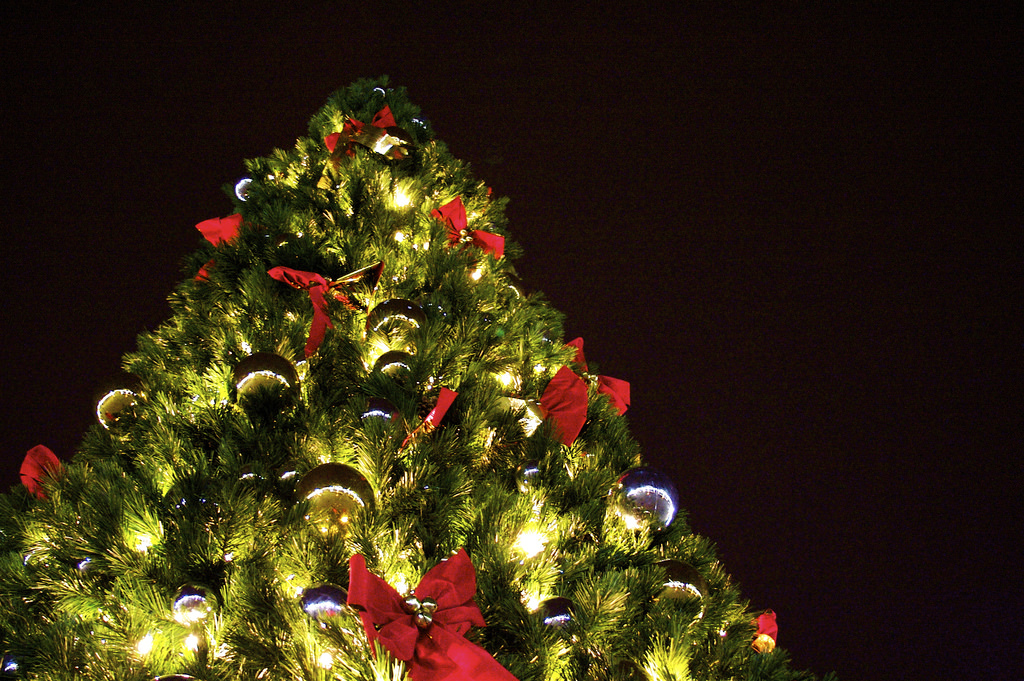
Which kind of tree is more environmentally friendly: a real or an artificial Christmas tree? The debate rages on. Photo: Darren Larson/Creative Commons
It’s that time of year. Time to decide whether you want a real Christmas tree, or an artificial Christmas tree. Likes and dislikes aside, to me the more important debate is figuring out which one is better for the environment in the long run. Like a lot of decisions in life, it’s complicated.
I recently learned where artificial Christmas trees originated. They have only been in use a few decades. Before that, a real pine or fir tree was the only option available if you wanted a Christmas tree. It changed when American toilet bowl brush manufacturer Addis Brush Company created an artificial tree from brush bristles in the 1930s. Yes, I’m telling you the first artificial Christmas trees were actually big toilet brushes. Try not to think about THIS when you see your next artificial Christmas tree!
In Southern California, there is a significant issue for us to factor in: our ongoing drought. Despite the welcome rain in San Diego County this week, California is in its fifth year of a serious drought.
Oil and water

The average Christmas tree grows for six to eight years before it shows up in your home. Photo: Brent Flanders/Creative Commons
The average Christmas tree grows for an average of six to eight years before it reaches the typical six to seven foot height for cutting and display. This represents thousands of gallons of water per tree. Based on this information, artificial trees are more eco-friendly, right?
Not so fast. Eighty percent of all artificial trees sold in the United States are made in China. Most are made from metal and PVC, a petroleum based plastic product. Petroleum, as in fossil fuels. Those trees come to the United States on container ships to West Coast and East Coast ports, where they are placed on delivery trucks for distribution to the U.S. Even if we assume thousands of trees are in each cargo container, it takes many gallons of fuel per tree to get from factory to your favorite spot in the living room.
You don’t have to buy a new artificial tree every year. On average, most consumers keep their trees for ten years. So for every year you buy a tree, there are nine years in between with no additional environmental impact.
Which trees have the bigger carbon footprint?
In some parts of the country, the Christmas tree in your living room was trucked hundreds or thousands of miles to reach your local Christmas tree lot, which means the use of fossil fuels and other negative impacts of transportation apply to your real tree, too. Add it up times ten, and which is worse?
During their production, Christmas trees absorb carbon dioxide from the air, and produce oxygen. But they may require applications of pesticides, herbicides and fertilizers. The ideal tree would be raised organically with integrated pest management, but this is rare.
The Montreal based consulting firm Ellipsos tried to settle this question in a study. It found that artificial trees have a carbon footprint of 17.6 pounds of CO2 per year, compared to 6.84 pounds per year for a real tree.
Not so fast, though. This is based on keeping your artificial tree for six years, AND based on driving three miles or less to get your real tree. If you keep your artificial tree longer, AND if you drive more than 10 miles total to get your real tree, the numbers reverse, and the artificial tree is the winner.
People who buy artificial trees argue the environmental aspect, but the single most popular reason is the convenience: no watering needed, no messy needles all over the floor, and no need to drag it out to the curb for recycling later.
Real trees are in the lead

Christmas tree farm in North Carolina, second only to Oregon in the U.S. for Christmas tree growing. Photo Patrick Beeson/Creative Commons
The artificial tree squad is losing so far. Real Christmas trees are still the more popular choice. Americans purchased 27.4 million real Christmas trees in 2017 according to the National Christmas Tree Association, versus 21 million artificial trees. Cost comparison: $75 average for a real tree, $107 for an artificial tree.
One quarter of all real trees came from a “choose and cut” farm, where you pick your own tree and chop it down to take it home. Another quarter buy their tree at a large chain store.
Twenty percent come from a temporary retail lot. 15 percent come from a nursery or garden center. Ten percent are sold by a nonprofit organization. About 310 thousand acres are in production to grow Christmas trees in the U.S., with 310 million trees growing at any given time. One hundred thousand people are employed in the Christmas tree industry.
The top Christmas tree producing states are Oregon, North Carolina, Michigan, Pennsylvanian, Wisconsin, and Washington State. One out of every three real Christmas trees in the U.S. is grown in Oregon. Only a small fraction (109,000 total) are grown in California. So we can set aside the drought argument, score one for the real tree fans.
Ninety-three percent of real Christmas trees are successfully recycled into mulch used in landscaping, or chipped and used for playground materials, hiking trails, paths and even beachfront erosion control. Artificial trees don’t biodegrade, so after you dispose of one it will remain in a landfill for decades.
Have we changed your mind about your choice of tree? Probably not based on the environmental aspect, since there are too many conflicting facts to make the choice obvious. That’s all right. This ongoing discussion is a net positive no matter what you decide. It’s a discussion we should all have about a lot of the items we purchase.
Every time you buy something – and we know you will be buying a LOT of stuff this time of year – it gives you the opportunity to evaluate the environmental impact of your purchasing decisions. This includes the packaging and the shipping, too. Stopping to think about if it is healthy all year round.
Factor in fire safety

Real Christmas trees are beautiful – but they can also be flammable. Photo: Christina Ruggiero/Creative Commons
There is one important consideration I’d like to bring to your attention: fire safety. Real Christmas trees can cause house fires every year, resulting in significant damage, injuries and even deaths. People forget to water. They use the wrong lights. They put the tree too close to heating sources. Or all of the above.
According to the National Fire Protection Association, U.S. fire departments respond to an average of 230 home structure fires every year that were started by Christmas trees, causing six fatalities, two dozen injuries and over $18 million in direct property damage. Admittedly 230 is a very small number out of 26.5 million trees, but if it’s your home, one is too many.
Most of you reading know I’ve experienced the loss of a home due to fire along with many other people in Southern California. It wasn’t a Christmas tree.But this ends the discussion for me. “Your mileage may vary.”


